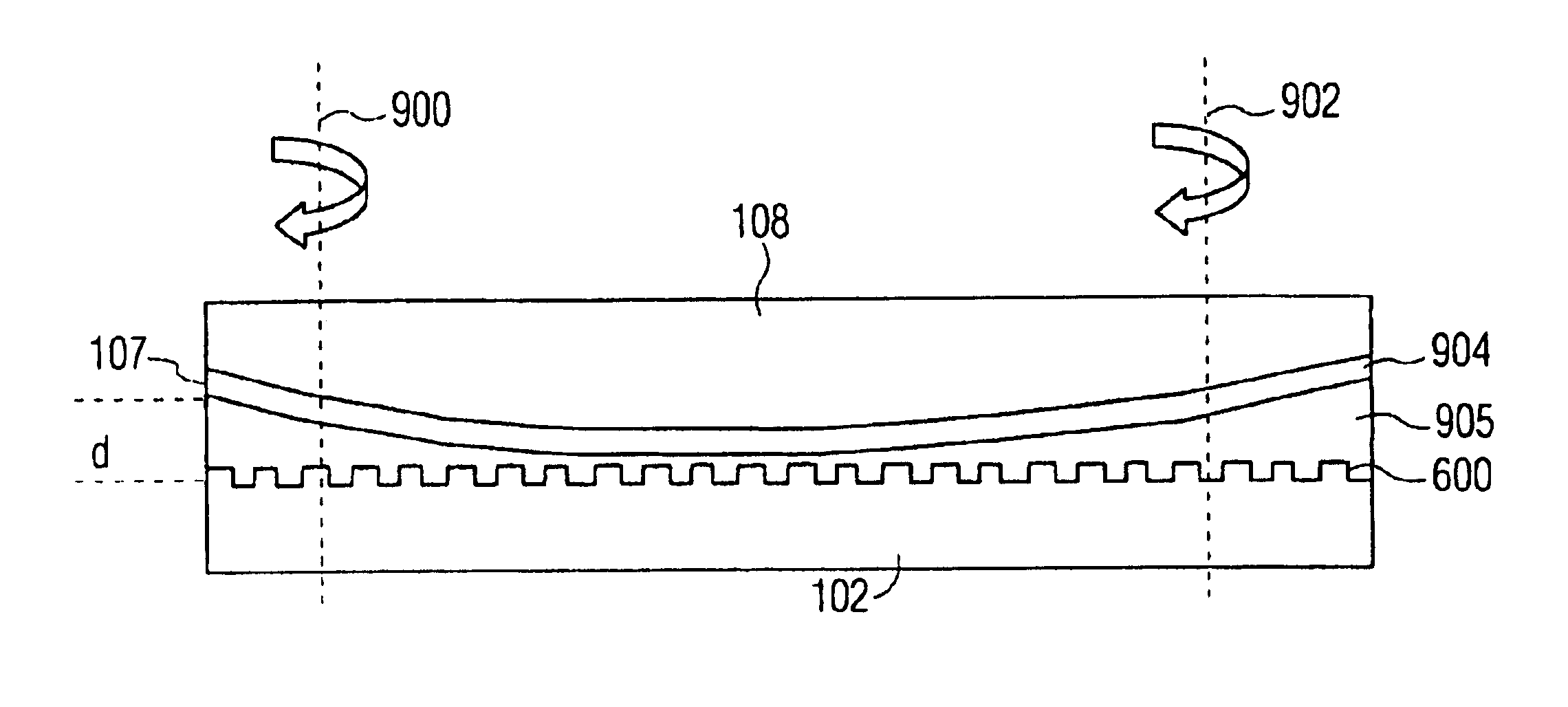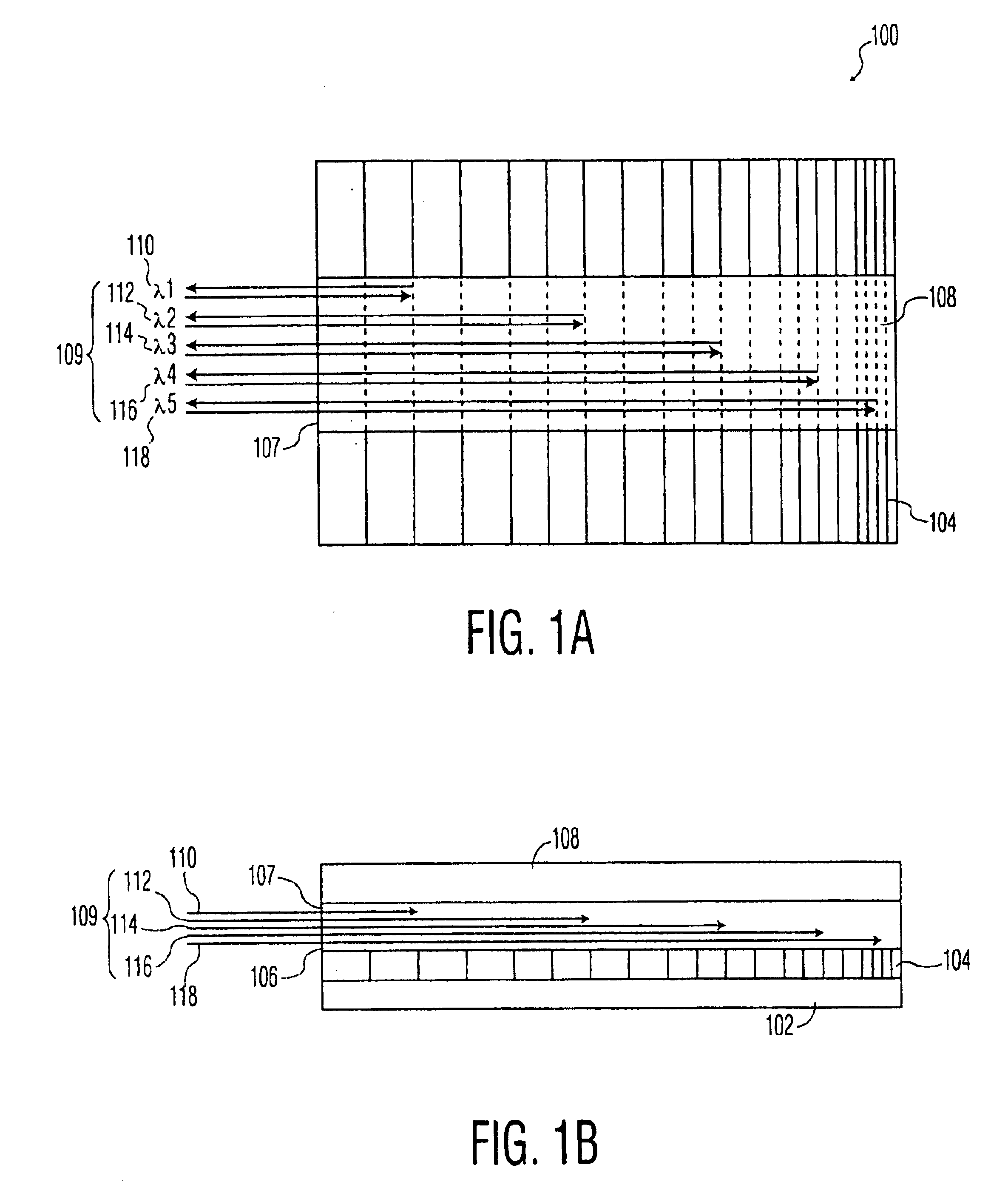Grating dispersion compensator and method of manufacture
a compensator and dispersion technology, applied in the field of optical communication systems, can solve the problems of fixed dispersion value compensation, time widening, and difficult tunable methods
- Summary
- Abstract
- Description
- Claims
- Application Information
AI Technical Summary
Benefits of technology
Problems solved by technology
Method used
Image
Examples
Embodiment Construction
One exemplary embodiment of the present invention, illustrated in FIGS. 1A and 1B, is GDC 100 including chirped optical grating 104. FIG. 1A is a top plan drawing and FIG. 1B is a side plan drawing of GDC 100. The exemplary device includes substrate 102, chirped optical grating 104, wave guide 106, and passivation layer 108. Waveguide 106 desirably exhibits low optical loss and a relatively high index of refraction in the desired wavelength band. Although the exemplary devices described in the present application are formed from various III / V materials, such as InP, GaAs, AlGaAs, or InGaAsP, other possible materials choices are contemplated. Possible alternative materials for waveguide 106 include: doped silica (similar to optical fibers); silicon; germanium; and other dielectric materials, which have low optical loss characteristics for the desired wavelength band and a relatively easily variable index of refraction.
Passivation layer 108 and chirped optical grating 104, and prefera...
PUM
 Login to View More
Login to View More Abstract
Description
Claims
Application Information
 Login to View More
Login to View More - R&D
- Intellectual Property
- Life Sciences
- Materials
- Tech Scout
- Unparalleled Data Quality
- Higher Quality Content
- 60% Fewer Hallucinations
Browse by: Latest US Patents, China's latest patents, Technical Efficacy Thesaurus, Application Domain, Technology Topic, Popular Technical Reports.
© 2025 PatSnap. All rights reserved.Legal|Privacy policy|Modern Slavery Act Transparency Statement|Sitemap|About US| Contact US: help@patsnap.com



